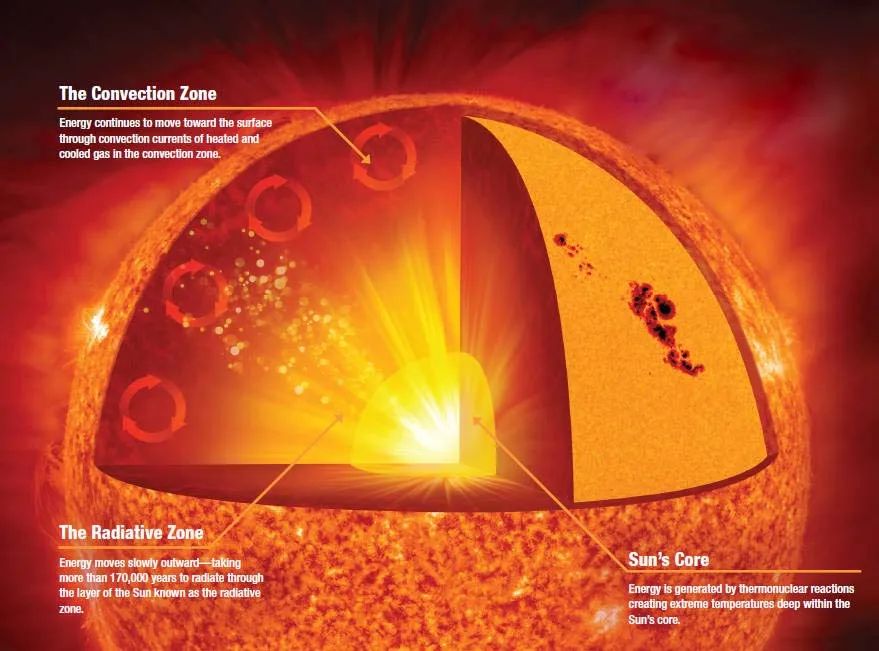What Is The Definition Of Solar Power In Physical Science?
Solar power refers to the conversion of energy from sunlight into electricity through the photovoltaic effect. It is a renewable energy source that has seen tremendous growth and development in recent years. Solar power is important because it provides a clean alternative to burning fossil fuels, reduces greenhouse gas emissions, diversifies energy supply, and allows decentralization of electricity generation.
This article will provide an overview of the key concepts behind solar power generation. Topics covered include solar radiation, the photovoltaic effect that enables solar cells to convert light into electricity, components that make up solar panels, measuring solar irradiance, factors impacting energy output, current and potential applications, and the future outlook for solar energy.
What is Solar Power?
Solar power is the conversion of energy from sunlight into electricity using solar photovoltaic (PV) cells. Photovoltaic means “light-electricity” and refers to the process of converting energy in photons of light into electricity within a solid state material. The photovoltaic effect allows certain materials to absorb photons of light and release electrons, generating an electric current that can be captured and used as electricity. Solar cells, also called photovoltaic cells or PV cells, form the basic component of solar panels used in photovoltaic solar power generation systems.
When sunlight hits the solar cell, the energy frees electrons within the cell’s semiconductor material. The flow of electrons generates a DC electric current that can be harvested and supplied as usable electricity. An inverter converts the DC output into AC electricity compatible with equipment and power grids. Multiple solar cells combined together in solar panel modules provide higher output levels for powering various electrical loads.
Solar Radiation
The sun produces energy through the process of nuclear fusion in its core. During fusion, hydrogen atoms fuse together under extremely high temperatures and pressures to form helium. This fusion reaction releases an enormous amount of energy in the form of gamma rays and other radiation.

As the radiation generated in the core of the sun makes its way to the outer layers, it loses energy and its wavelength increases. By the time the radiation reaches the surface of the sun, it transitions into mostly visible light with some ultraviolet and infrared wavelengths. This radiation streams outward in all directions at the speed of light as electromagnetic waves.
The spectrum of solar radiation that reaches the Earth includes ultraviolet (UV), visible and infrared (IR) light. UV light has the highest energy but makes up a small portion of the spectrum. Visible light accounts for most of the solar radiation spectrum that reaches the Earth. Infrared light has longer wavelengths and lower frequency than visible light.
Photovoltaic Effect
The photovoltaic effect is the process that allows solar cells to convert sunlight into electricity. It involves photons from sunlight dislodging electrons in the solar cell’s semiconductor material to generate an electric current.
Specifically, when photons from sunlight strike the solar cell, they transfer their energy to electrons in the cell’s semiconductor material, like silicon. This energy causes the electrons to break free of their atomic bonds and flow through the material as electricity. The photon’s energy has to be equal to or greater than the band gap energy of the semiconductor in order to dislodge the electron. This band gap energy is specific to the type of material used.
The flow of electrons generates an electric current from the solar cell through an external circuit where power can be harnessed. Meanwhile, the absence of electrons creates “holes” in the semiconductor material that also contribute to current flow. Special electrical properties at the junction between different layers in the cell material allow this process to occur.
In summary, the photovoltaic effect converts photons from sunlight into electrical current within a solar cell. This happens through photons dislodging electrons in the cell’s semiconductor material to create electricity. This effect is key to generating renewable solar power.
Solar Cell Components
Solar cells convert sunlight into electricity using the photovoltaic effect. The most common type of solar cell uses a semiconductor material, usually silicon, that has been processed to form a p-n junction. When sunlight strikes the solar cell, photons are absorbed by the semiconductor, freeing electrons from their atomic bonds to create electron-hole pairs.
The p-n junction generates an electric field that causes the electrons to flow in one direction, producing an electrical current. The top layer of the solar cell is negatively doped (n-type) to have excess electrons, while the bottom layer is positively doped (p-type) to have a deficit of electrons. When an electron-hole pair is created, the electric field causes the electron to flow out of the p-type layer into the n-type layer and on through an external circuit before recombining with a hole in the p-type layer. This one-way flow of electrons is the photovoltaic effect.
In addition to the p-n junction, solar cells have other components like metallic contacts and an antireflective coating. The contacts allow the electrical current to be extracted, while the coating reduces reflection to help more sunlight enter the cell. Overall, the photovoltaic effect arising from the semiconductor p-n junction is fundamental to converting sunlight into electricity in a solar cell.
Solar Panel Systems
Solar panels are made up of many individual solar cells wired together. Solar cells are made from semiconducting materials like silicon that are able to convert sunlight directly into electricity through the photovoltaic effect. Solar panels contain groups of solar cells connected electrically and encapsulated together under a layer of tempered glass or transparent plastic.
The solar cells are connected together into what is known as a solar module or a solar panel. These solar panels can vary in size, but a typical residential solar panel is around 1.5 to 2 square meters. The solar cells within a solar panel are wired together in series strings into circuitry that is optimized for the desired voltage and power output. Most solar panels have output power ratings from 100 watts to 350 watts, with solar cell efficiencies ranging from 12% to 25%.
For larger utility-scale solar applications, hundreds or even thousands of solar panels are connected together into what is called a photovoltaic array. The array is configured and wired to produce the desired electrical output for connection into an inverter, battery system, or electrical grid. Large solar power plants can have massive arrays covering many acres of land and generating hundreds of megawatts of power.
Measuring Solar Irradiance
Solar irradiance refers to the power per unit area received from the Sun in the form of electromagnetic radiation. It is a measure of the intensity of solar power at a particular location. Solar irradiance is measured using instruments called pyranometers.
A pyranometer is a type of actinometer that is designed specifically to measure solar irradiance on a planar surface. It measures solar radiation flux density – the rate of solar radiation energy reaching a unit area on the Earth’s surface, expressed in watts per square meter (W/m2). Pyranometers contain temperature sensors and are constructed to have a spectral sensitivity that closely matches the solar spectrum at Earth’s surface.
There are several industry standards for calibrating and testing pyranometers to ensure accurate measurements. The World Meteorological Organization (WMO) has guidelines for classifying pyranometers into Secondary Standard, First Class, and Second Class based on performance specifications. Higher accuracy pyranometers are required for research grade measurements, while lower accuracy is sufficient for general solar power applications.
By precisely measuring solar irradiance over time, pyranometers provide data on the available solar energy resource at a location. This data is critical for proper siting, design, and performance modeling of solar power systems. The readings from a pyranometer can determine the potential power output of photovoltaic panels or concentrated solar arrays at that site.
Factors Affecting Output
The amount of solar energy that can be converted into electricity by a solar panel system depends on several factors related to time, weather, and geography. Some of the main factors that affect solar power output include:
Time of Day and Season: The position of the sun in the sky varies throughout the day and across seasons. Solar output is highest when the sun is directly overhead (at solar noon) and lowest in the mornings and evenings when the sun is lower in the sky. Output also varies by season, with higher output potential in summer than winter.
Cloud Cover: Clouds block incoming solar radiation from reaching solar panels. Areas with frequent cloudy and overcast days will produce less solar power than arid or high-altitude regions with plenty of sunshine.
Temperature: Hotter temperatures can decrease solar cell efficiency and lower output. Cooler temperatures tend to increase output. However, extreme cold can also reduce output once temperatures drop below a certain threshold.
Dust and Dirt: Dust, dirt, snow, and other accumulations on the surface of solar panels will block sunlight and decrease output. Regular cleaning and maintenance is important.
Geography and Landscape: The angle and orientation of solar panels, which varies by latitude and landscape, affects how much direct radiation they receive. Solar potential is highest in the southern regions for those in the northern hemisphere.
Understanding these output factors allows proper solar system sizing and site selection to maximize solar electricity production.
Applications of Solar Power
Solar power has a wide variety of applications in our daily lives. Here are some examples:
Calculators and watches
Small solar cells often provide power for many pocket calculators and wristwatches. These solar cells convert sunlight into electricity to power the device.
Residential homes
Many homes today have rooftop solar panel systems to generate electricity. These systems can provide supplemental power to the household or even allow homes to operate off-grid entirely.
Spacecraft
Solar power is often used to provide electricity on spacecraft and artificial satellites. Large solar arrays can harness energy from the sun while in orbit.
Solar vehicles
Some vehicles use solar panels installed on their surface to generate electricity that charges the battery. This extends the driving range for electric vehicles.
Solar lighting
Solar-powered lighting using LED bulbs is a popular renewable option for gardens, driveways and other outdoor spaces.
Solar water heating
Solar thermal collectors can heat water for residential and commercial use, reducing reliance on fossil fuels.
Future of Solar Energy
The future looks bright for solar power. Advancements in technology are opening up new possibilities for more efficient and affordable solar energy. Some key innovations on the horizon include:
Thin Film Solar Cells – Traditional solar panels use silicon cells to absorb sunlight. Thin film solar cells use a fraction of the silicon, bringing down manufacturing costs. Materials like cadmium telluride and copper indium gallium selenide are used in thin film cells. The thinner profile also allows more flexible applications like solar shingles.
Perovskite Solar Cells – Perovskites are emerging as a promising new material for solar cell fabrication. Perovskite cells can reach high efficiencies while using even less materials than thin film. Continued research is focused on improving durability and lifetime.
Solar Roof Tiles and Shingles – Rather than bulky solar panels, solar roof systems integrate photovoltaics directly into roofing tiles and shingles. This creates a seamless, aesthetically-pleasing installation and opens up solar energy for more residential and commercial rooftops.
Improved Energy Storage – Effective energy storage is key to solving the intermittency of solar power. Continued advances in lithium-ion batteries, flow batteries, compressed air storage and other technologies will enable storage of solar energy for nighttime or cloudy days.
With these new innovations and research driving down costs, solar power has huge potential to supply a significant share of global electricity generation. The modular and scalable nature of solar lends itself to distributed generation. Rooftop solar, community solar farms, and large-scale solar plants can all help accelerate the transition to renewable energy worldwide.




